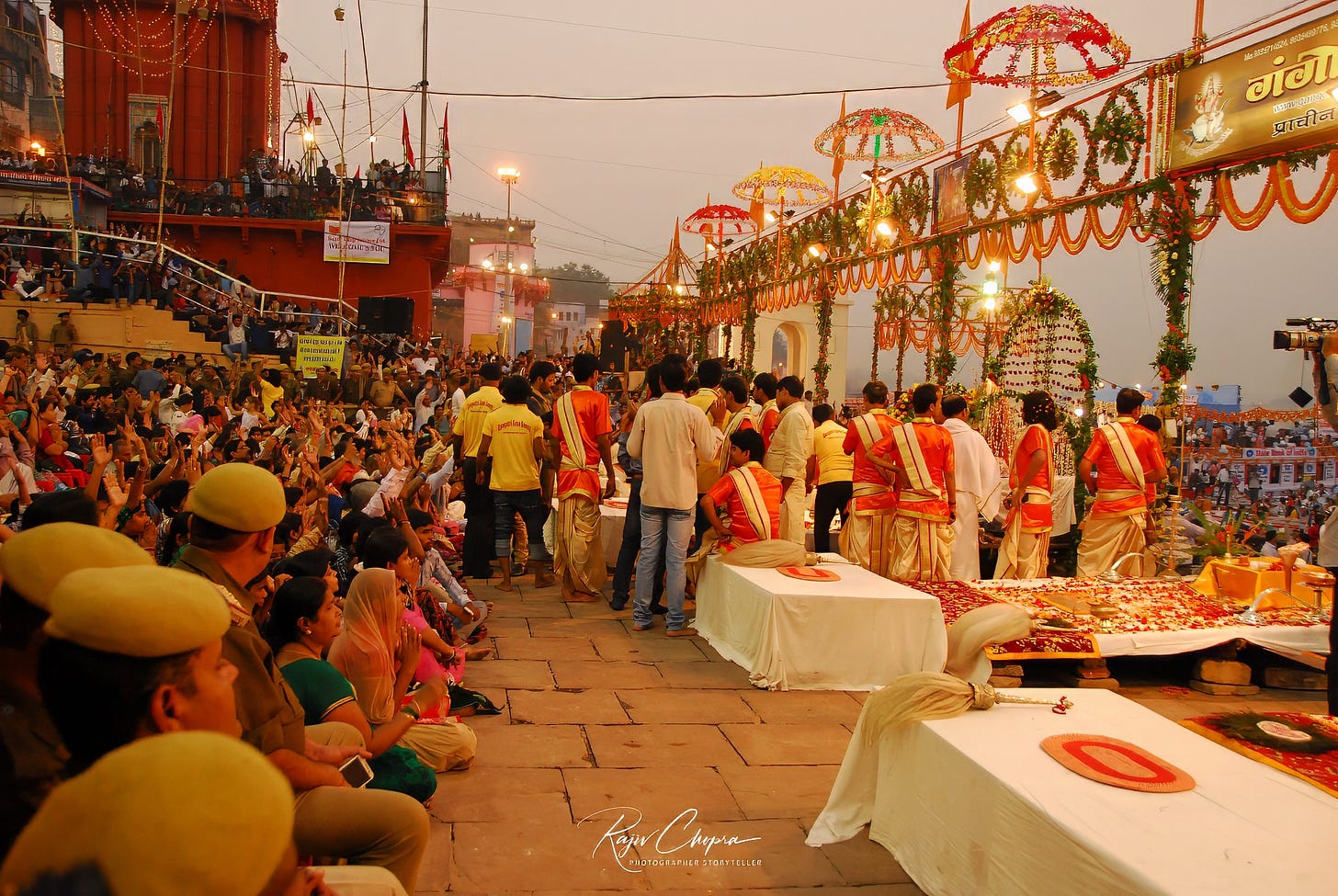The Evening Prayers at the Ghats
The evening prayers at the ghats are magnificent, but only for a few visits.
The evening prayers at the ghats are magnificent, but only for a few visits.
At the Kartik Purnima
It was Kartik Purnima when I was last in Benares (well, I made one more trip after this one). My friends and I planned our dates to coincide with the festival because people had told us the evening prayer ceremony was magnificent and colorful.
I’ve been strug…
Keep reading with a 7-day free trial
Subscribe to Tramping in India to keep reading this post and get 7 days of free access to the full post archives.



